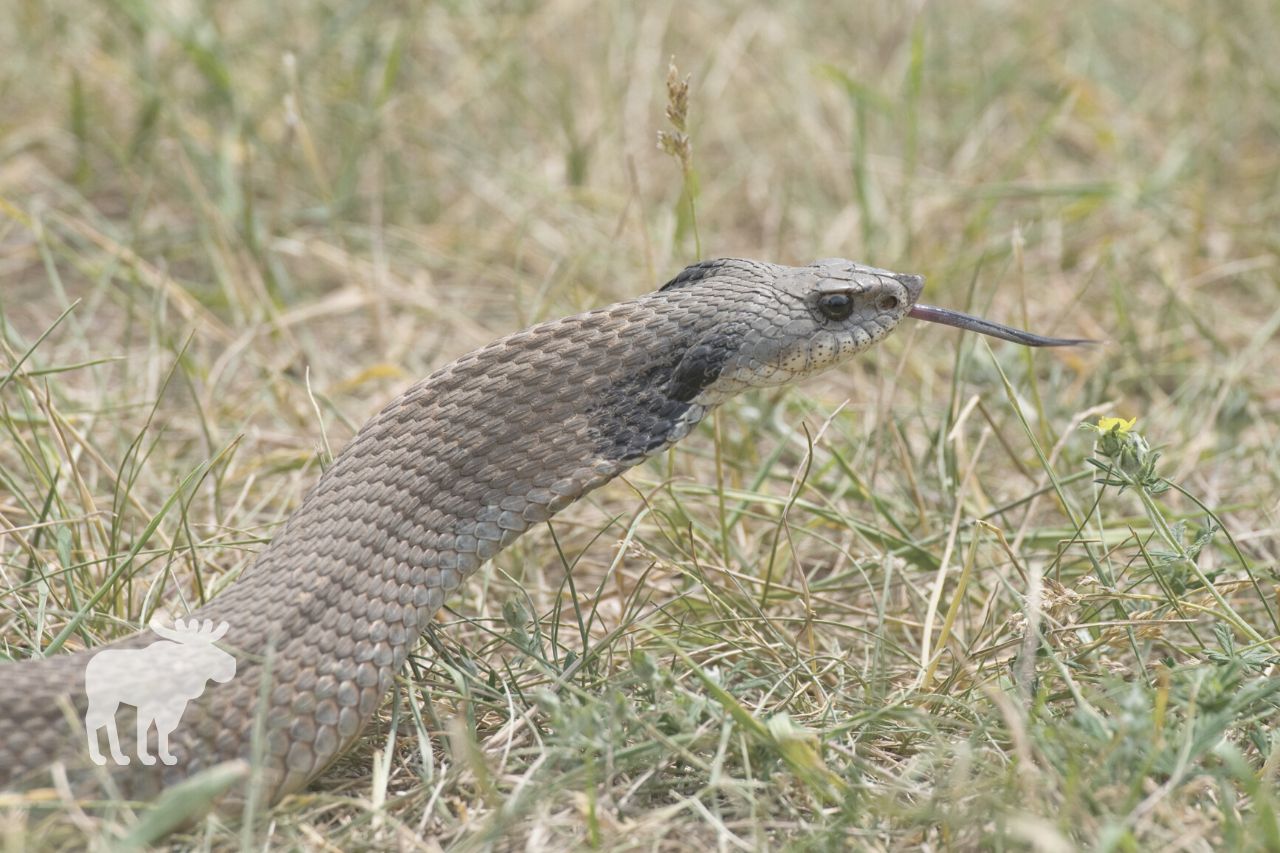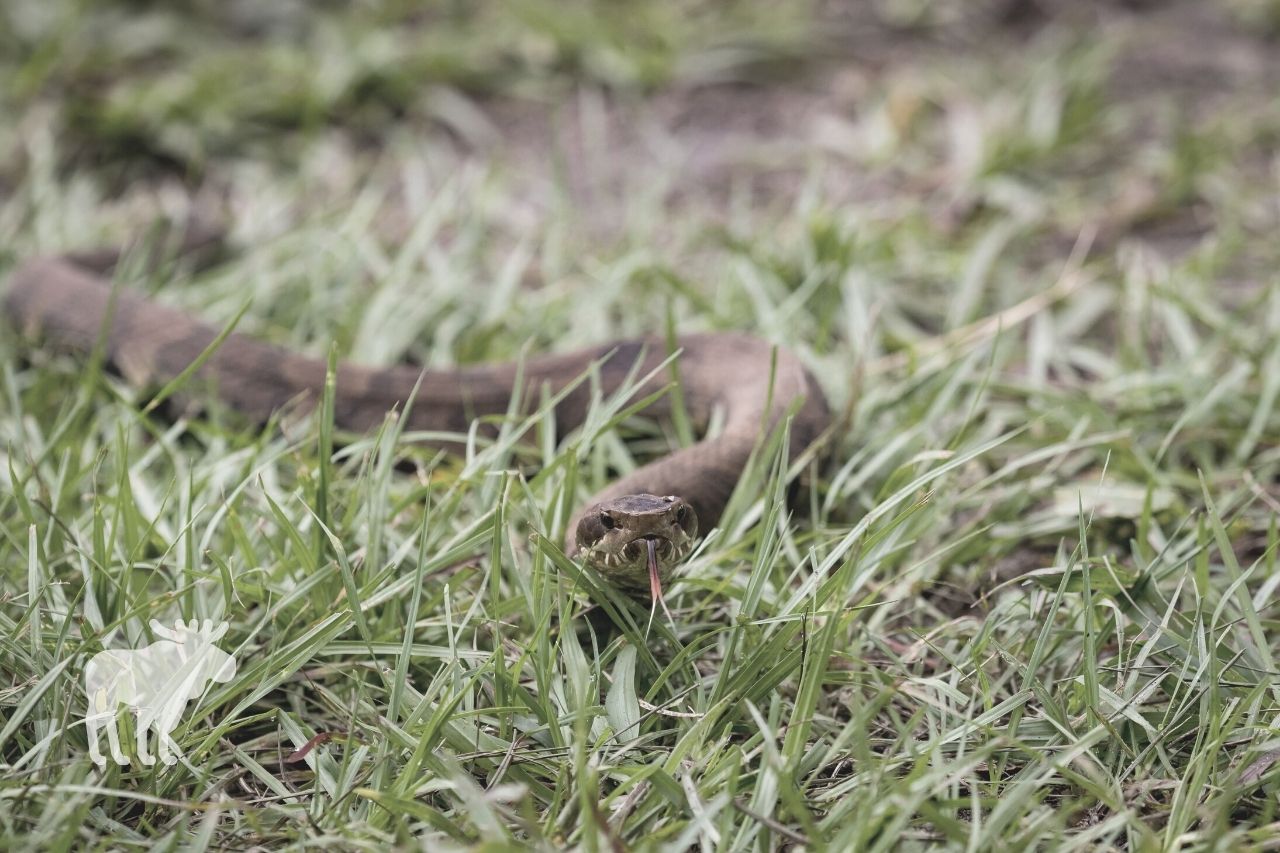If you live in an area with rattlesnakes, you definitely want to avoid them. Their painful bites can cause tissue damage and even death. But what if that isn’t a rattlesnake you’re looking at? Are there other snakes out there that look similar? Keep reading to find out more about the snakes that look similar to rattlesnakes.
What You'll Learn Today
Snakes That Look Like Rattlesnakes
1. Gopher Snakes

Gopher snakes, also called bull snakes by some (although there are differences), are found throughout much of North America, especially Mexico and western parts of the U.S. and Canada.
Gopher snakes can come in many different colors and patterns depending on species and location; however, most of their colors and patterns are similar to those displayed by rattlesnakes.
They are similar in size and build to most rattlesnakes.
Aside from the appearance, gopher snakes tend to act like rattlesnakes: if they feel threatened, they will coil their bodies and shake their tails. They may even make a rattling sound; however, they do this with their mouths instead of their tails.
Gopher snakes don’t have rattles on their tails. If you are able to catch a glimpse of the tail, this is one way to tell them apart.
What’s more, gopher snakes are non-venomous, so they lack the fangs, facial pits, and slanted eyes that rattlesnakes have. Instead, their heads and eyes are rounded.
Check out this video to see a gopher snake mimicking a rattlesnake:
2. Milk Snakes
Milk snakes are found throughout eastern North America, primarily the United States and Canada. They are closely related to king snakes.
Most milk snakes have more vibrant colors than rattlesnakes do; however, some display more dull colors and patterns, making them easier to confuse.
Milk snakes sometimes behave like rattlesnakes when they feel threatened.
That said, milk snakes are generally smaller than rattlers, growing up to three feet long (rattlesnakes can grow up to eight feet long). They are also non-venomous, so they have more rounded heads and eyes than rattlers do.
They are generally calm, unaggressive snakes, and they are most active at night.
3. Copperhead Snakes

Copperhead snakes are found throughout the eastern part of the United States. They are pit vipers, meaning they belong to the same family as rattlesnakes.
Copperheads and rattlesnakes are both venomous, so both should be avoided if possible.
Copperheads and rattlers are approximately the same size, and both have thick bodies. To a casual observer, they may appear to have similar colors and patterns.
That said, copperheads are more orange in color, and the patterns on their backs tend to resemble hourglasses or Hershey’s Kisses. Rattlesnakes tend to have more browns and grays in their diamond-shaped patterns.
What’s more, copperheads don’t have rattles on their tails.
4. Viper Boas
These snakes are native to New Guinea. Though they are not found in the same part of the world as rattlesnakes, they do have some similarities in appearance.
Viper boas are not venomous, but they do share a similar head and eye shape with pit vipers such as rattlesnakes. They also have thick bodies that taper to thin tails, and they often have brownish-red patterns that look similar to those on a rattlesnake.
These snakes are generally smaller than rattlesnakes, however, and again, they are harmless. What’s more, since they live in a different part of the world, they are unlikely to be seen in the same areas as rattlesnakes.
5. Hognose Snakes

Hognose snakes are found throughout the eastern part of North America. They can come in many different colors and patterns, while some are pure black with no patterns at all.
Those that are patterned and lighter in color can be mistaken for rattlesnakes. Though they are generally smaller than rattlers, they have thick bodies which they sometimes coil into an S-shape, as rattlesnakes do, when they feel threatened.
Hognose snakes have narrow, pointed heads with distinctive pig-like snouts. This is the easiest way to tell them apart.
Hognose snakes are venomous, though their venom doesn’t harm humans. However, their saliva can cause allergic reactions.
6. King Snakes
King snakes are found throughout much of North America. The prairie king snake, in particular, is often mistaken for a rattlesnake.
This type of snake is brown and patterned, giving it a similar appearance with the rattlesnake. What’s more, when threatened, it will coil its body and shake its tail against plant matter to mimic a rattlesnake.
However, king snakes are harmless. They do not have the same spade-shaped head and slanted eyes as rattlers do; instead, their heads and eyes are both rounded.
Though king snakes don’t hurt humans, they will often eat other snakes, including rattlesnakes. This makes them a good type of snake to have around.
7. Cottonmouth Snakes

Cottonmouths, also known as water moccasins, are found primarily in southeastern regions of the United States. Like rattlesnakes, they are pit vipers, though they do not have rattles on their tails.
Cottonmouths are generally darker than rattlesnakes, but some of them have brown patterns on their thick bodies. This is especially true of juvenile cottonmouths, which may be lighter in color and more easily confused with rattlers.
Cottonmouths tend to coil their bodies and show off their fangs when they feel threatened. They have striking white mouths, which is one of their most identifiable features; rattlesnakes do not share this characteristic.
What’s more, cottonmouths are semiaquatic, so they spend a lot of their time in water. Rattlesnakes spend all of their time on dry land.
8. Water Snakes

There are various species of water snakes found throughout North America. The common water snake in particular shares many physical similarities with rattlesnakes.
Both snakes have blotchy or banded patterns, and both have similar brown, gray, and reddish-brown colors. Water snakes become darker with age, so they are most often confused with rattlers when they are younger.
Water snakes are harmless. They have rounded eyes and heads to set them apart from the more angular, slanted features of pit vipers like rattlesnakes.
They also spend most of their time in the water, whereas rattlesnakes live on dry land. Finally, water snakes don’t have rattles on their tails like rattlesnakes do.
Conclusion
There are quite a few snakes that look similar to rattlesnakes, though most of them are harmless. These include gopher snakes, viper boas, and king snakes.